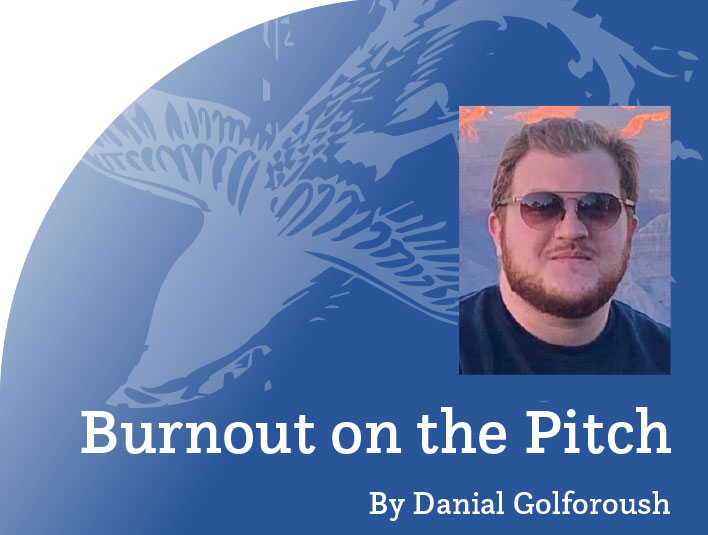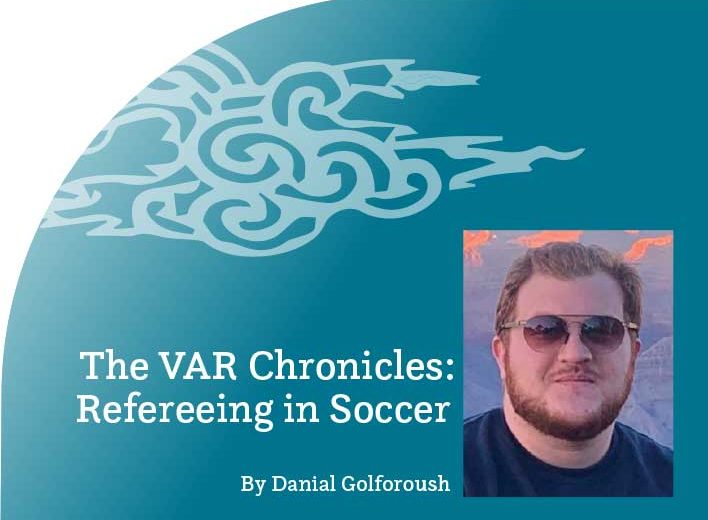Burnout on the Pitch: Soccer Players Struggling with Demanding Schedules
By Danial Golforoush
 The timing couldn’t have been more telling. On September 17, Rodri, one of the top contenders for the Ballon d’Or, voiced concerns about the relentless schedule soccer players face, even suggesting that a player strike might be on the horizon. Just five days later, during Manchester City’s match against Arsenal, Rodri was forced off the pitch in the 21st minute with what turned out to be a season-ending ACL injury. His warning about player fatigue suddenly became all too real.
The timing couldn’t have been more telling. On September 17, Rodri, one of the top contenders for the Ballon d’Or, voiced concerns about the relentless schedule soccer players face, even suggesting that a player strike might be on the horizon. Just five days later, during Manchester City’s match against Arsenal, Rodri was forced off the pitch in the 21st minute with what turned out to be a season-ending ACL injury. His warning about player fatigue suddenly became all too real.
The incident has reignited the ongoing debate about whether modern football’s jam-packed calendar is pushing athletes to their physical limits. Rodri’s teammate, Ilkay Gündogan, and Arsenal’s young defender, Jurrien Timber, who suffered a similar injury last year, have echoed the same concerns. “I totally agree with him,” Timber said. “It’s a big topic in dressing rooms everywhere. Players are at more risk with this schedule.” Timber added, “Last week we played City, and they had another game two days later. It’s just too much.”
Even though players may be stepping onto the field for more matches, the quality of play is noticeably declining due to both mental and physical fatigue. The sheer volume of games leaves little time for recovery, leading to slower reactions, poorer decision-making, and an overall dip in performance. What should be thrilling, high-energy contests are often marred by tired legs and exhausted minds, reducing the spectacle for fans and increasing the risk of injury for players. As the schedules become more grueling, the very essence of the game—skill, creativity, and intensity—is compromised.
This issue is not new. Over two decades ago, during a World Cup year, UEFA took action in response to concerns voiced by medical professionals about serious injuries to stars like Zinedine Zidane, David Beckham, and Robert Pires. Spearheaded by Jiri Dvorak, then FIFA’s Chief Medical Officer and chairman of FIFA’s Medical Assessment and Research Center in Zurich, UEFA adjusted its calendar by removing the Champions League second group stage. Dvorak famously noted in a Guardian interview, “There are rules about the maximum number of hours per day you can drive a truck, but there are no rules for footballers. Guidelines on the number of games that players may play in a season would benefit them by keeping them as healthy as possible. That would improve the standard of play and resonate well with fans and television.” Yet here we are, back at square one. With the introduction of a 32-team Club World Cup (previously 4 teams), a 48-team World Cup (up from 32 teams), and an expanded 36-team UEFA Champions League and Europa League (previously 32 teams), we are likely to encounter similar issues as before. Younger players are now playing more matches, increasing their risk of career-threatening injuries, while key players are pushed into too many games, leading to injuries that can sideline them for significant periods.
While some fans argue that with salaries in the hundreds of thousands of dollars, players should be able to handle a few extra matches each season—or that fringe players can step in when needed—the reality is far more complex. Regardless of their pay, a player’s body has its limits, and the demand for peak performance is higher than ever. When injuries occur, fans miss out on thrilling matches featuring top talent. Moreover, elite teams and coaches prefer to field their best lineups, so this pushes players like Rodri through a grueling 64-match season, putting immense stress on their bodies, and ultimately diminishing their performance. The unfortunate truth is that while teams may have depth in their rosters, relying on substitutes is not a sustainable strategy for achieving victory given that elite-level talent is scarce. Each match requires a high level of physical and mental exertion, and the cumulative effect of fatigue can lead to slower reactions and poor decision-making, tarnishing the quality of the game.
As teams progress deeper into tournaments, players often find themselves juggling multiple competitions, leading to heightened fatigue and stress. Clubs may schedule three matches within a single week during critical stages of the season, making it nearly impossible for players to rest adequately between games. This grueling schedule becomes even more pronounced for athletes whose teams make deep runs, as these players are frequently the same ones called upon for international duties in continental tournaments and World Cup qualifiers, further compounding their fatigue.
The phenomenon was humorously highlighted in the “tired Pedri” memes that circulated recently, where the 18-year-old midfielder appeared on camera with dark circles under his eyes, looking visibly exhausted during the pregame national anthem. This visual served as a stark reminder of the toll that an unforgiving schedule takes on athletes, as fatigue isn’t just a trivial concern; it significantly impacts performance levels, increasing the risk of injury and diminishing decision-making on the pitch. As clubs chase trophies and fans crave excitement, the relentless schedule threatens not just individual players’ careers, but the very essence of competitive football itself. Ultimately, if the sport is to thrive, a reassessment of the demands placed on these athletes is imperative, as their well-being directly impacts the game we all love.
So, what’s next? Athletes, coaches, and fans must step up and voice their fears and frustrations, even considering striking, as FIFA and UEFA need to fulfill their role in protecting player welfare. Ultimately, for the sport to thrive, a reassessment of the demands placed on these athletes is imperative, as their well-being directly impacts the game we all love. If players continue to face relentless schedules and insufficient recovery time, the quality of football will inevitably decline, transforming what should be exhilarating matches into displays of sheer exhaustion. It’s time for a collective effort to prioritize player health, ensuring that football remains a showcase of skill and excitement rather than a contest of endurance.














